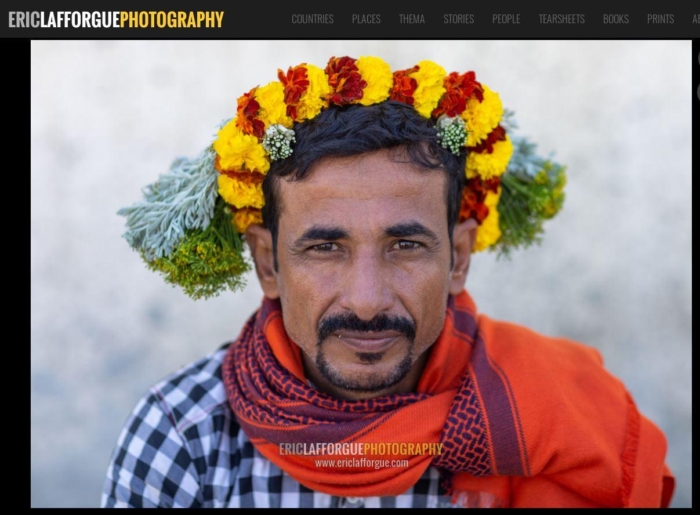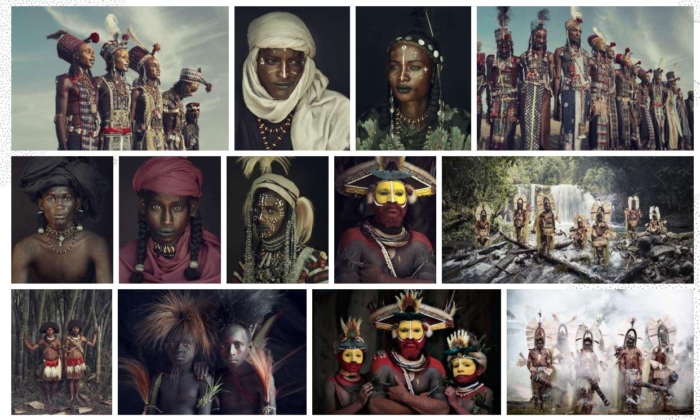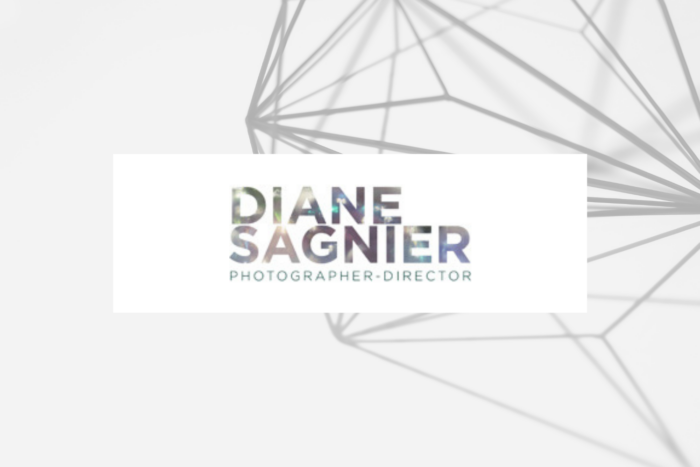Photography is a creative art that engages and captivates the mind. As such, your photography portfolio must reflect exactly that — creativity.
This is the tool that exposes your work to prospective clients. It must be impressive enough to land you paying clients. There are already countless creative portfolios your prospects can select from. Why would a customer pick yours? Make sure it stands out — in a good way.
Here are 8 tips on creating an effective photography portfolio:
Choose your images wisely
Pick your niche
Caption your images
- The year you took the picture
- The image title
- The size of the photograph
- Your name
Select the best portfolio theme
- Is easy to customize
- Is professionally designed
- Enhances your work
- Captivates your audience
Use a great logo
Make sure your portfolio is mobile-friendly
Make yourself reachable
Continuously update your portfolio
Photography is more than just a job to many photographers; it’s their passion. Many photographers have emotional attachments to certain images they’ve taken. But is that what the client is looking for?
Make sure each and every image in your portfolio appeals to prospective customers. View all of your images with a critical eye. Are they likely to immediately grab someone’s attention?
Just because a certain image may be sentimental to you doesn’t mean it will have the same meaning for your customers. If they’re likely to scroll past it, you should remove it. You only have one chance to impress, so make sure every image counts.
Photos courtesy David Lazar
This is one concept David Lazar understands well. His portfolio showcases only his best work — with each image even more captivating than the last.
You’re probably familiar with the phrase, “Jack of all trades and master of none.” It’s not a myth, especially in the photography world. Pick a niche and make it your area of expertise.
Some photographers enjoy capturing pictures of anything and everything. But if you want to pitch to a customer who’s looking for a wedding photographer, you can’t show them a portfolio with pictures of cars and food as well as weddings.
Customers prefer working with a photographer who shows great skill in the specific area that they’re looking for. So be clear about your preferences and interests.
Prominent photographer Joel Santos capitalized on this concept by picking a niche. He focuses exclusively on travel photography and uses creative ways to capture different destinations.
You can never underestimate the visual impact of a stunning image. Many pictures tell a story all by themselves. But adding a caption will put your image into context.
Captions can also acknowledge the talent that made the image possible. This is simply a matter of giving credit where it’s due. Here you’ll acknowledge either the model in the picture or the art director for the shoot.
One photographer who understands the power of captions is Rehahn. His profile features interesting and informative captions that put every picture into context.
Remember to make sure your captions are free of any grammatical or spelling mistakes. Double check the spellings of the names or places. This will also make your portfolio appear professional.
Other captions ideas include
Your options are endless when it comes to selecting a portfolio theme. Whichever theme you decide on, make sure it
Choose a theme that’ll do your work justice. You shouldn’t have to struggle with coding, so it must be user-friendly for you — and the client.
The theme you decide on must be designed to protect your work. You shouldn’t have to worry about losing your work each time you want to switch themes.
Here are some of the many different themes to pick from.
Horizontal theme
As the name suggests, this type of theme allows you to horizontally scroll through your galleries. This theme is ideally suited for smaller images that are displayed side by side and aren’t cropped.
The horizontal theme layout is interesting, and it’s easy to navigate through the images.
Slideshow theme
This type of theme displays images onscreen one at a time. The beauty of this theme is that one particular image gets the focus, and the viewer isn’t distracted by surrounding images. This theme works best for stand-alone or small images.
Slideshow themes are even more user-friendly than horizontal ones. You can easily view each image without having to click through the pictures.
Vertical theme
Unlike horizontal themes, which display images side by side, this theme shows images one above the other.
The vertical theme is relatively popular among photographers. For vertical themes, make sure the images in each row are related to each other. This makes the message you want to portray more apparent.
Tiled theme
If you have many images, a tiled theme will work well for you. This makes it easier to navigate through all the images.
Tiled theme images replace the plain thumbnail gallery. This layout is bold and elegant. Visitors won’t have to go through as many clicks to view the entire gallery.
Never underestimate the power of a logo that immediately draws the audience’s attention.
To appreciate the importance of a logo, you must first understand its purpose.
A logo must inspire trust, admiration, and loyalty. And it must be instantly recognizable. If people can’t figure out exactly what your brand represents from looking at your logo, then it’s not the right one.
It’s in your best interests to hire a professional to design your logo. Ideally your logo should meet the following requirements.
Simple
Less is more — that’s not a cliché. Simple is always the way to go when it comes to logo design. It must be unique but not overdone.
Memorable
Your prospective clients must remember your logo and what it represents. That’s the only way you’ll stand out from the rest of your competitors. Your logo can easily achieve this aim if it’s simple but appropriate for your line of work.
Appropriate
We hinted above about your logo being appropriate. Let’s expand on that. Your logo must match your area of specialty. You can’t have a logo that features a jet when your portfolio showcases shoes.
Timeless
Ask yourself this: Will your logo still be appealing 20 years from now? An effective logo is timeless and will stand the test of time.
Versatile
Your logo must be compatible with various media platforms and applications. It must look just as good whether printed, viewed on a smartphone, or displayed on a laptop screen.
Here are some examples of great photography logo designs:
The Diane Siagner logo embodies simplicity — no bells and whistles, simple but attractive.
The abstract camera lens with leaf by LogoDesign.Net is to the point. It’s clear that the company specializes in nature photography.
The Little Fish Photography logo by 99Designs is another fun example of branding done right. It’s light-hearted and instantly captures the audience.
This logo for Expert Photography is simple but bold and powerful enough to grab someone’s attention.
In this digital age, many people access information using their tablets or smartphones. Your portfolio must look just as appealing on a tablet as it does on your desktop monitor.
Pay attention to the screen resolution and the font and type size you use. Use high-resolution images that can be clearly displayed onscreen. If you’re going to direct customers to your page or site, make sure it’s as user-friendly as possible.
Zev’s profile is the epitome of versatility. Not only is it mobile-friendly, but the quality of images isn’t compromised whether you’re viewing them on a cell phone, desktop, or any other device.
The last thing you want is for people to have difficulty navigating through your site. They should spend more time viewing your work, not looking for it.
Intuitive navigation on your site is paramount. Is your contact information easy to find? Consider adding it to your about page, where it will be readily accessible. For a more direct approach, you can add it to your contact page. Here you should list the different ways prospects can reach you, be they email or phone.
What if you’re not comfortable making your personal phone number or address public? An easy alternative is to create a contact form where your visitors can submit questions, feedback, or comments.
Make sure you respond to these emails in a timely fashion. If you’re unresponsive, not only will you appear unprofessional, but customers will simply take their business elsewhere.
We live in an ever evolving world — your portfolio must evolve too. You have to keep up with technological advances. Use the latest cameras to keep the quality of your images up to scratch. You won’t be doing yourself any favors by holding onto an outdated camera because it was your high-school graduation present.
Customer needs and desires are constantly changing, and you must try to give your customers what they want. Prove that you’re as good now as you were a year ago. Be deliberate about it; make it a point to update your pictures every month so that you don’t appear inactive or uncommitted to your work.
Be on the lookout for ways to continuously improve and update your portfolio. This is an effective way to market your talent.
Wrapping up
Your photography portfolio is often the first point of contact with a potential client. Make it count.
Your portfolio must reflect your style, range, and skills. You’re putting your entire brand on full display for everyone to see.
Creating a portfolio is time-consuming. Your portfolio must be well thought-out and give visitors a clear indication of who you are and what your work entails. Don’t leave potential clients confused and guessing. Make them realize you’re exactly the person they’re looking for by ensuring that your images are visually appealing.
Done right, your photography portfolio will be a powerful marketing tool that grabs attention.






















































Send Comment: